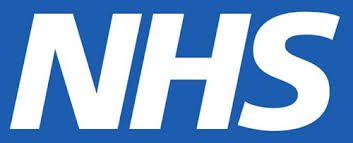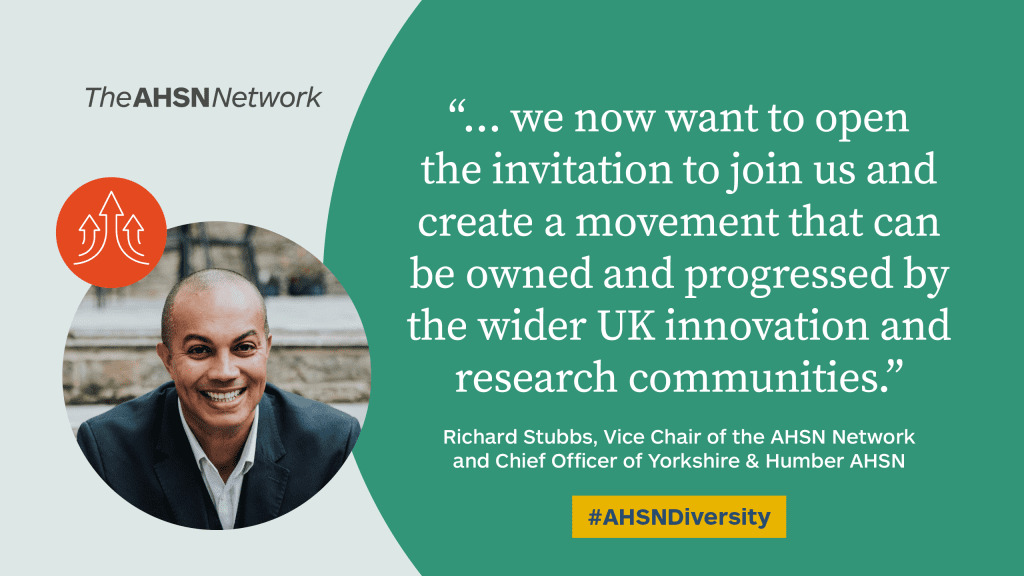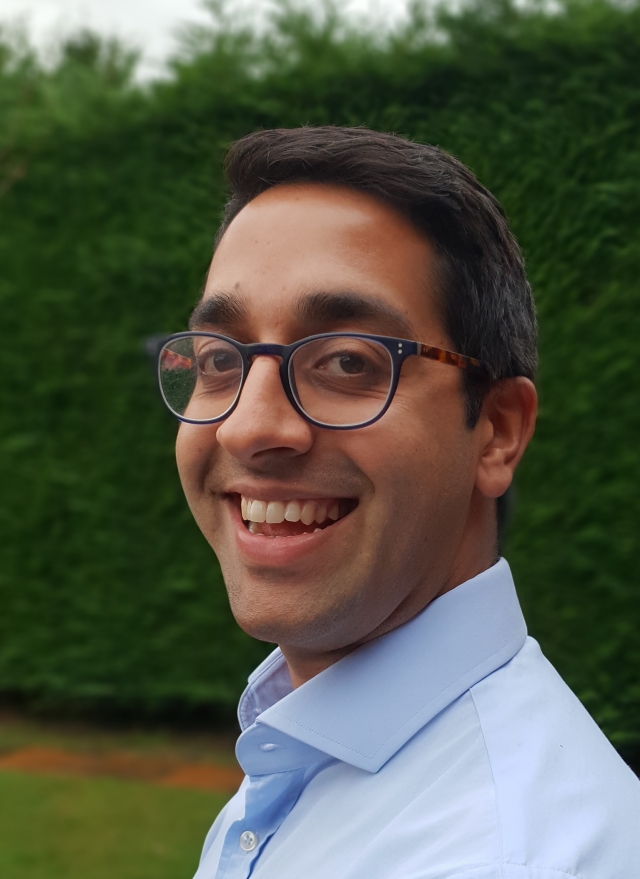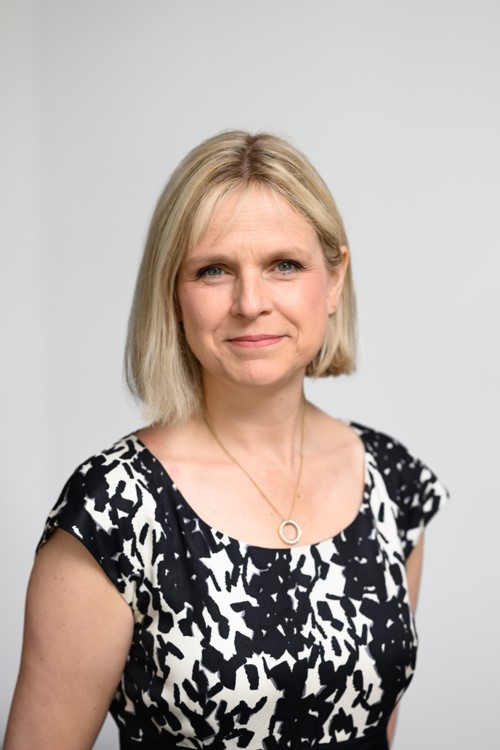A spotlight on inequality
In 2019 when launching our first report on the importance of ensuring greater diversity in health innovation design and implementation, I wrote that: “Our NHS should represent and reflect the communities we serve. This does not just apply to our front-line workforce. The way that we develop and adopt innovation and technology must also be based around our core mission to serve all our population, and to ensure that the transformation of our health service reduces, and not widens, health inequalities.”
This is as true now as it was then and the events since that report, most notably the stark inequalities spotlighted by the pandemic and the global debate on race sparked by the murder of George Floyd, have only served to heighten the importance of this mission.
The purpose of the AHSN Network is to transform lives through healthcare innovation. This means that we need to reach all our patients and citizens through our work, and it also means that we need to ensure that our innovation opportunities are accessible to all our NHS staff, as well as the innovators that support us. We decided to take a leadership role in the role of diversity and inclusion in spreading innovations that advance social change and promote a fair and inclusive society.
In 2019, the AHSN Network made key pledges to demonstrate our commitment to diversity and innovation. Our pledges, adopted by all 15 AHSNs, have guided us to embed diversity and inclusion in all aspects of our organisations and our work. I promised in our first report to tell the story of what we have achieved as a result of our pledges. This report is part of that promise. But it is also a call to action to our NHS partners, government, and our innovation and life sciences industries to join us in the mission we have instigated, collaborate with us, and adopt and adapt our pledges for your own innovation programmes.
Our role as AHSNs
Due to our unique role working with the health and care sector, innovators, patients and the public, the AHSN Network has a crucial role in influencing and delivering this agenda. We will not succeed in addressing health inequalities without diverse innovators, both from within and outside of the NHS. We need innovators from all backgrounds who can develop and support solutions that enable the inclusion of all members of our society.
Our pledges are probably the most important way to show our commitment to diversity as they hold us to account. But it’s about more than that. Our health and care systems turn to us to support them to innovate, so we must make sure we are championing diversity through our people and processes.
By enacting our pledges, we’ve uncovered insights into how our staff think and feel; new ways of identifying potential barriers to equity when introducing innovation; even more diversity challenges that innovation could potentially address; and, importantly, ways that we can adapt and improve.
We’ve also found common cause with many of our fellow organisations in the life science and innovation ecosystem. I’m particularly excited about the conversations for impactful partnerships on this agenda that are now happening because of the work that we started in 2019.
Sharing learnings and making changes
We’ve learnt a lot over the last few years, which we’ve summarised in our recent report Diversity and innovation progress and learning report – reflecting on and continuing our mission <link to RESOURCE NUMBER R64>. While we recognise our work in this area will never be complete, we have valuable learnings to share, and we want to continue to grow and make changes.
Some of our takeaways include:
- Culture change initiatives are never easy. Since the 15 AHSN boards committed to the pledges, we’ve learnt that it takes leadership. It takes more than a few volunteers working in the margins. Nor can it just be top-down; colleagues need to be involved and bring their perspectives to the table.
- When taking on pledges, you will face a level of discomfort, and you have to be prepared to have uncomfortable conversations – these conversations are the catalysts of change.
- Sometimes starting the process is the hardest part. We’d recommend setting pledges without necessarily knowing the route map and the end state.
- Diversity initiatives can become scrutinised because parts of this work are emotive and feel less concrete. Recognising this is essential to ensure progress.
Our work in this area will never be complete. Championing diversity in innovation is a continuing mission. The same is true for the health and care system.
Refreshing our pledges and creating a movement
We established these diversity pledges to provide a commitment and framework that champions the business case for greater diversity in innovation. By embedding diversity and equity at the forefront of identifying and nurturing health innovations and the innovators behind them, we can better serve all communities.
The work that we have done together over the last two years has undoubtedly had real impact on improving the way that we serve our patient and innovator communities. We have no intention of ending this journey of progress. But we now want to open the invitation to join us and create a movement that can be owned and progressed by the wider UK innovation and research communities.
To aid this, we have refreshed our pledges to make them less-AHSN specific with the intention of being adoptable and adaptable by any organisation that wishes to implement them – access a copy of these pledges here <link to RESOURCE NUMBER R65>. I have personally been inspired by Sir Lewis Hamilton and the Mission 44 Foundation that he created to ‘support, champion and empower young people from underrepresented groups to succeed through narrowing opportunity gaps across society’. Although our work is not an exact parallel my hope is that we can create a Mission44-style platform to champion greater diversity in our innovation, research and life science workforces, as well as have a greater, evidenced-based focus on the importance of serving all our communities as we transform how we deliver health and care in the UK.
I am incredibly grateful for the hard work and dedication of our Diversity and Innovation network of AHSN volunteers who enabled this work to happen over the last few years. They should be incredibly proud of the impact that they’ve had and continue to have through this work. Please do join us, adopt the pledges for your own work, and connect with us so that we can go further together.
Access our report: Diversity and innovation progress and learning report – reflecting on and continuing our mission.

The government has set out three shifts it wants to see happen: treatment to prevention, hospital to community, analogue to digital. HealthTech has a crucial role in supporting the delivery of all three. But using technology to help deliver these changes requires procuring the technology, and when all the noise is about there being no [...]

Dr Anish Bhuva, is the founder of Pace MRI, a Consultant Cardiologist at Barts Heart Centre and an Associate Professor at University College London. Tell us about the innovation. What does it do, how does it help, who does it help and why is it important? Pace-MRI is an award-winning digital tool that manages complex [...]

As we celebrate International Women’s Day, Anna King, Commercial Director at Health Innovation Network South London, identifies how FemTech is 'Accelerating Action' in UK healthcare and driving economic growth. In recent years, FemTech - the sector focused on women’s health and wellness technology - has gained significant traction globally. In the UK, this growing sector [...]









